

Oil & Gas Geology ›› 2024, Vol. 45 ›› Issue (5): 1226-1246.doi: 10.11743/ogg20240503
• Petroleum Geology • Previous Articles Next Articles
Juncheng QIAO1,2( ), Shaoying CHANG1,3, Jianhui ZENG1,2(
), Shaoying CHANG1,3, Jianhui ZENG1,2( ), Peng CAO3, Keliang DONG1,2, Mengxiu WANG3, Jining YANG1,2, Yazhou LIU1,2, Hui LONG1,2, Ting AN4, Rui YANG5, Lin WEN1,2
), Peng CAO3, Keliang DONG1,2, Mengxiu WANG3, Jining YANG1,2, Yazhou LIU1,2, Hui LONG1,2, Ting AN4, Rui YANG5, Lin WEN1,2
Received:2024-05-22
Revised:2024-09-12
Online:2024-10-30
Published:2024-11-06
Contact:
Jianhui ZENG
E-mail:Juncheng.Qiao@cup.edu.cn;zengjh@cup.edu.cn
CLC Number:
Juncheng QIAO, Shaoying CHANG, Jianhui ZENG, Peng CAO, Keliang DONG, Mengxiu WANG, Jining YANG, Yazhou LIU, Hui LONG, Ting AN, Rui YANG, Lin WEN. Origin of differential hydrocarbon accumulation in ultra-deep carbonate reservoirs along strike-slip fault zones in the Fuman area, northern Tarim Basin[J]. Oil & Gas Geology, 2024, 45(5): 1226-1246.
Add to citation manager EndNote|Reference Manager|ProCite|BibTeX|RefWorks
Table 1
Characteristics of the connection to source rocks and hydrocarbon transport capacity of strike-slip fault zones in the Fuman area"
| 通源性 | 输导性 | ||||||||
|---|---|---|---|---|---|---|---|---|---|
| 类型 | 模式图 | 断裂附近地层变形特征 | 变形强度 | 类型 | 模式图 | 断裂带附近地层变形特征 | 变形强度 | ||
| 强通源型 | 直接错断强通源型 | 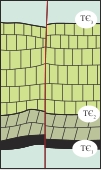 | 地层直接错断,断距明显,地层平直,破碎程度高 | >0.10 | 强输导型 | 直接错断强输导型 | 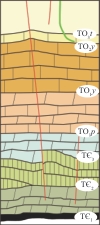 | 膏岩层直接错断,断距明显,地层平直,破碎程度较高 | >0.15 |
| 未错断强通源型 |  | 地层未发生明显错断,地层弯曲变形程度大,地层破碎程度高 | >0.10 | 未错断强输导型 | 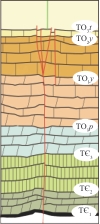 | 膏岩层未发生明显错断,地层弯曲变形程度大,地层破碎程度高 | >0.09 | ||
| 未错断中通源型 | 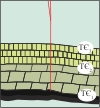 | 地层未发生明显错断,地层弯曲变形程度幅度较大,地层破碎程度较高 | 0.06~0.10 | 未错断中输导型 | 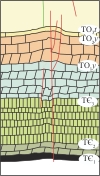 | 膏岩层未发生明显错断,地层弯曲变形程度幅度较大,地层破碎程度较高 | 0.05~0.09 | ||
| 未错断弱通源型 |  | 地层未发生明显错断,地层完全变形程度低,较平直,地层破碎程度较低 | 0.02~0.06 | 未错断弱输导型 | 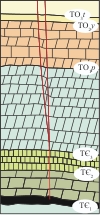 | 膏岩层未发生明显错断,地层完全变形程度低,较平直,地层破碎程度较低 | <0.09 | ||
| 极弱通源型 | 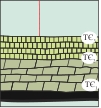 | 断层未断至烃源岩层 | 无 | 无 | 无 | 无 | 无 | ||
Table 2
Evaluation of the storage capacity of carbonate reservoirs in the Ordovician Yijianfang Formation, Fuman area"
| 储集性能 | 优储集 | 中储集 | 差储集 |
|---|---|---|---|
储集模式 示意图 | 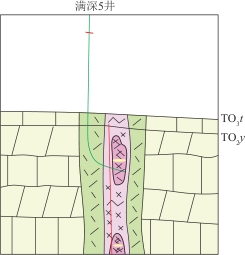 | 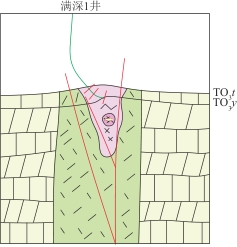 | 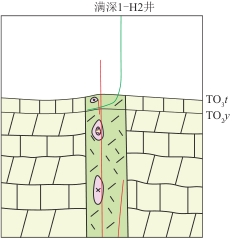 |
| 储集系数 | >1.5 | 0.5~1.5 | <0.5 |
| 储集空间类型 | 分支断裂发育,断裂面附近发育规模性的洞穴,向周缘发育宽度较大的缝洞发育带和衍生裂缝带,洞穴和孔洞是主要储集空间 | 分支断裂较发育,仅在主干断裂面附近发育较小规模的洞穴,周缘缝洞发育带规模减小,发育较大规模的衍生裂缝带,洞穴、孔洞和裂缝是主要储集空间 | 分支断裂不发育,洞穴不发育,周缘缝洞发育带规模较小,发育较大规模的衍生裂缝带,孔洞、裂缝及基质孔隙是主要储集空间 |
| 储集空间形态 | 球形、纺锤形、条形 | 以球形为主 | 以条形或者纺锤形为主 |
| 储集物性特征 | 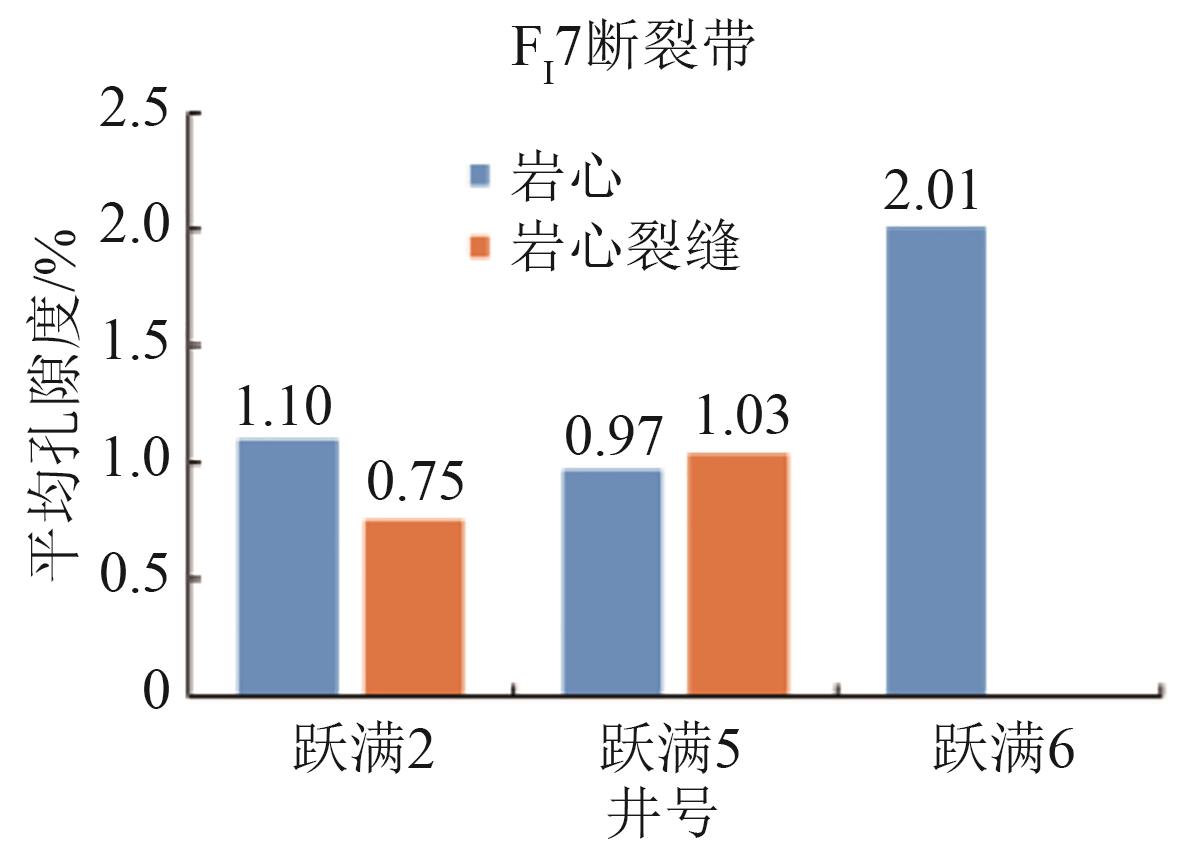 | 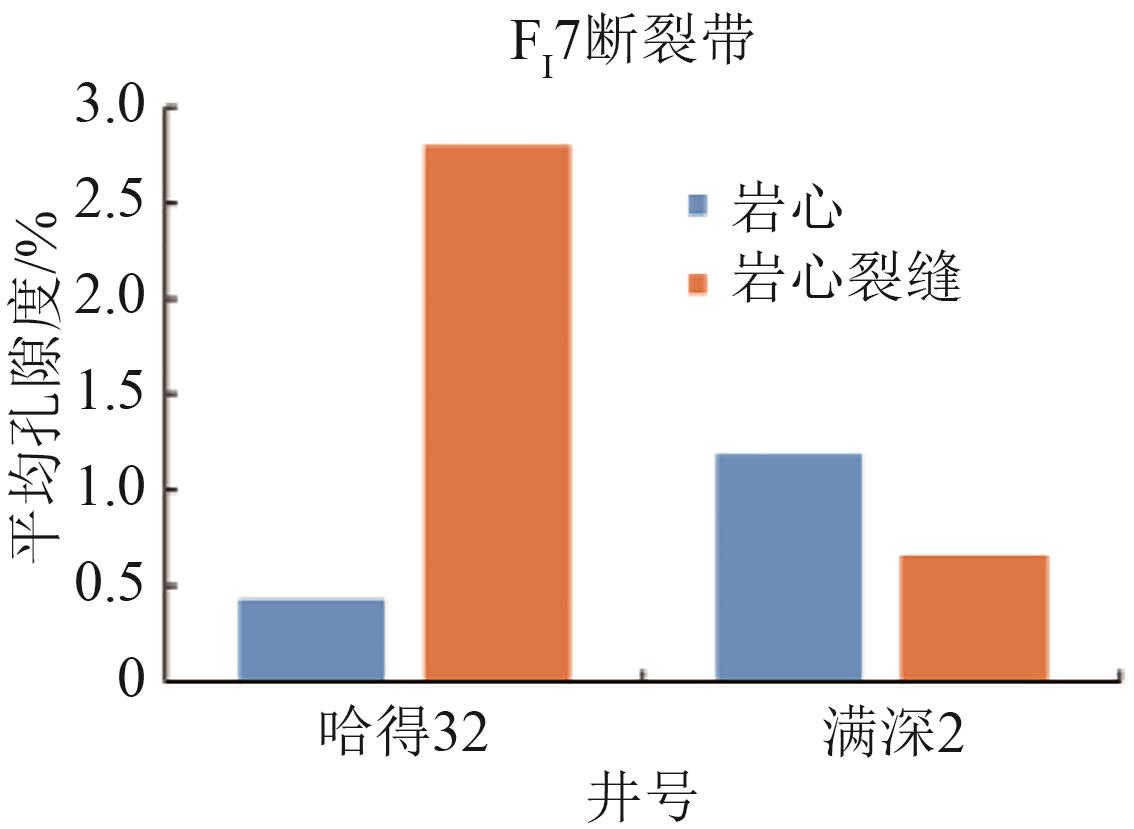 | 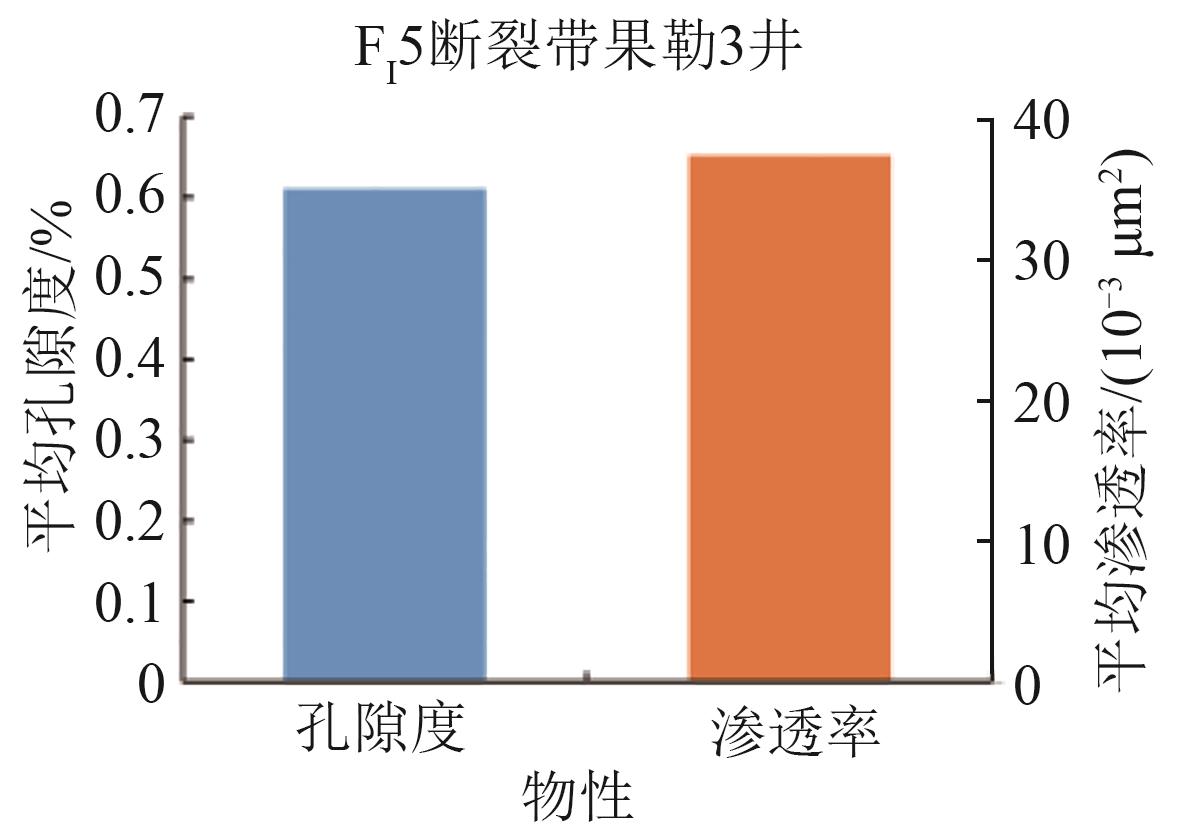 |
| 微观储集空间特征 | 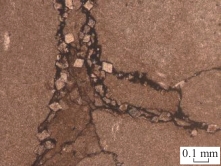 | 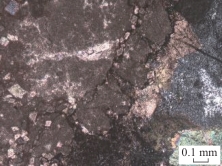 | 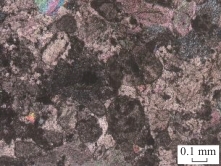 |
| 发育应力段 | 拉分段为主,挤压段次之 | 挤压段为主,平移段次之 | 主要出现在平移段,少量出现在挤压段 |
Table 3
Pearson correlations between parameters for hydrocarbon migration and accumulation and the degree of hydrocarbon enrichment in strike-slip fault zones in the Fuman area"
| 成藏运聚条件参数 | 折日产油气当量 | 累计产油 | 累计产气 | 累计产油气当量 | |
|---|---|---|---|---|---|
| 源岩变形强度 | 皮尔逊相关系数 | 0.274 | 0.621** | 0.732** | 0.667** |
| 显著性水平(双尾) | 0.304 | 0.008 | 0.001 | 0.003 | |
| 源岩断距/m | 皮尔逊相关系数 | 0.068 | 0.143 | 0.136 | 0.144 |
| 显著性水平(双尾) | 0.803 | 0.583 | 0.604 | 0.582 | |
| 膏盐岩变形强度 | 皮尔逊相关系数 | 0.418* | 0.183 | 0.354 | 0.231 |
| 显著性水平(双尾) | 0.042 | 0.380 | 0.082 | 0.266 | |
| 膏盐岩断距/m | 皮尔逊相关系数 | 0.507* | 0.299 | 0.516** | 0.361 |
| 显著性水平(双尾) | 0.012 | 0.147 | 0.008 | 0.076 | |
| 膏盐岩厚度/m | 皮尔逊相关系数 | 0.767** | 0.044 | 0.219 | 0.091 |
| 显著性水平(双尾) | 0 | 0.834 | 0.292 | 0.666 | |
| 储集系数 | 皮尔逊相关系数 | 0.355 | 0.262 | 0.300 | 0.277 |
| 显著性水平(双尾) | 0.125 | 0.251 | 0.187 | 0.224 | |
Table 4
Characteristic values and variance percentages of six principal components of the hydrocarbon migration and accumulation parameters in strike-slip fault zones in the Fuman area"
| 主成分编号 | 初始特征值 | 方差百分比/% | 累积百分比/% |
|---|---|---|---|
| 1 | 3.682 | 61.364 | 61.364 |
| 2 | 1.084 | 18.070 | 79.434 |
| 3 | 0.546 | 9.103 | 88.537 |
| 4 | 0.500 | 8.327 | 96.864 |
| 5 | 0.127 | 2.119 | 98.983 |
| 6 | 0.061 | 1.017 | 100.000 |
| 1 | EHRENBERG S N, NADEAU P H, STEEN Ø. Petroleum reservoir porosity versus depth: Influence of geological age[J]. AAPG Bulletin, 2009, 93(10): 1281-1296. |
| 2 | 贾承造, 张水昌. 中国海相超深层油气形成[J]. 地质学报, 2023, 97(9): 2775-2801. |
| JIA Chengzao, ZHANG Shuichang. The formation of marine ultra-deep petroleum in China[J]. Acta Geologica Sinica, 2023, 97(9): 2775-2801. | |
| 3 | 赵喆. 近10年全球油气勘探特征分析及启示[J]. 石油科技论坛, 2019, 38(3): 58-64. |
| ZHAO Zhe. Analysis of global oil and gas exploration characteristics during the past decade[J]. Petroleum Science and Technology Forum, 2019, 38(3): 58-64. | |
| 4 | 焦方正. 塔里木盆地顺托果勒地区北东向走滑断裂带的 油气勘探意义[J]. 石油与天然气地质, 2017, 38(5): 831-839. |
| JIAO Fangzheng. Significance of oil and gas exploration in NE strike-slip fault belts in Shuntuoguole area of Tarim Basin[J]. Oil & Gas Geology, 2017, 38(5): 831-839. | |
| 5 | 罗晓容, 杨海军, 王震亮, 等. 深层—超深层碎屑岩储层非均质性特征与油气成藏模式[J]. 地质学报, 2023, 97(9): 2802-2819. |
| LUO Xiaorong, YANG Haijun, WANG Zhenliang, et al. Heterogeneity characteristics of clastic reservoirs and hydrocarbon accumulation mode in deep-ultradeep basins[J]. Acta Geologica Sinica, 2023, 97(9): 2802-2819. | |
| 6 | 郑和荣, 胡宗全, 云露, 等. 中国海相克拉通盆地内部走滑断裂发育特征及控藏作用[J]. 地学前缘, 2022, 29(6): 224-238. |
| ZHENG Herong, HU Zongquan, YUN Lu, et al. Strike-slip faults in marine cratonic basins in China: Development characteristics and controls on hydrocarbon accumulation[J]. Earth Science Frontiers, 2022, 29(6): 224-238. | |
| 7 | 杨海军, 邓兴梁, 张银涛, 等. 塔里木盆地满深1井奥陶系超深断控碳酸盐岩油气藏勘探重大发现及意义[J]. 中国石油勘探, 2020, 25(3): 13-23. |
| YANG Haijun, DENG Xingliang, ZHANG Yintao, et al. Great discovery and its significance of exploration for Ordovician ultra-deep fault-controlled carbonate reservoirs of Well Manshen 1 in Tarim Basin[J]. China Petroleum Exploration, 2020, 25(3): 13-23. | |
| 8 | 张水昌, 苏劲, 张斌, 等. 塔里木盆地深层海相轻质油/凝析油的成因机制与控制因素[J]. 石油学报, 2021, 42(12): 1566-1580. |
| ZHANG Shuichang, SU Jin, ZHANG Bin, et al. Genetic mechanism and controlling factors of deep marine light oil and condensate oil in Tarim Basin[J]. Acta Petrolei Sinica, 2021, 42(12): 1566-1580. | |
| 9 | 田军, 杨海军, 朱永峰, 等. 塔里木盆地富满油田成藏地质条件及勘探开发关键技术[J]. 石油学报, 2021, 42(8): 971-985. |
| TIAN Jun, YANG Haijun, ZHU Yongfeng, et al. Geological conditions for hydrocarbon accumulation and key technologies for exploration and development in Fuman Oilfield, Tarim Basin[J]. Acta Petrolei Sinica, 2021, 42(8): 971-985. | |
| 10 | 邓尚, 李慧莉, 张仲培, 等. 塔里木盆地顺北及邻区主干走滑断裂带差异活动特征及其与油气富集的关系[J]. 石油与天然气地质, 2018, 39(5): 878-888. |
| DENG Shang, LI Huili, ZHANG Zhongpei, et al. Characteristics of differential activities in major strike-slip fault zones and their control on hydrocarbon enrichment in Shunbei area and its surroundings, Tarim Basin[J]. Oil & Gas Geology, 2018, 39(5): 878-888. | |
| 11 | 邓尚, 刘雨晴, 刘军, 等. 克拉通盆地内部走滑断裂发育、演化特征及其石油地质意义:以塔里木盆地顺北地区为例[J]. 大地构造与成矿学, 2021, 45(6): 1111-1126. |
| DENG Shang, LIU Yuqing, LIU Jun, et al. Structural styles and evolution models of intracratonic strike-slip faults and the implications for reservoir exploration and appraisal: A case study of the Shunbei area, Tarim Basin[J]. Geotectonica et Metallogenia, 2021, 45(6): 1111-1126. | |
| 12 | 韩剑发, 苏洲, 陈利新, 等. 塔里木盆地台盆区走滑断裂控储控藏作用及勘探潜力[J]. 石油学报, 2019, 40(11): 1296-1310. |
| HAN Jianfa, SU Zhou, CHEN Lixin, et al. Reservoir-controlling and accumulation-controlling of strike-slip faults and exploration potential in the platform of Tarim Basin[J]. Acta Petrolei Sinica, 2019, 40(11): 1296-1310. | |
| 13 | 黄诚, 云露, 曹自成, 等. 塔里木盆地顺北地区中-下奥陶统“断控”缝洞系统划分与形成机制[J]. 石油与天然气地质, 2022, 43(1): 54-68. |
| HUANG Cheng, YUN Lu, CAO Zicheng, et al. Division and formation mechanism of fault-controlled fracture-vug system of the Middle-to-Lower Ordovician, Shunbei area, Tarim Basin[J]. Oil & Gas Geology, 2022, 43(1): 54-68. | |
| 14 | 林波, 张旭, 况安鹏, 等. 塔里木盆地走滑断裂构造变形特征及油气意义——以顺北地区1号和5号断裂为例[J]. 石油学报, 2021, 42(7): 906-923. |
| LIN Bo, ZHANG Xu, KUANG Anpeng, et al. Structural deformation characteristics of strike-slip faults in Tarim Basin and their hydrocarbon significance: A case study of No.1 fault and No.5 fault in Shunbei area[J]. Acta Petrolei Sinica, 2021, 42(7): 906-923. | |
| 15 | 云露, 邓尚. 塔里木盆地深层走滑断裂差异变形与控储控藏特征——以顺北油气田为例[J]. 石油学报, 2022, 43(6): 770-787. |
| YUN Lu, DENG Shang. Structural styles of deep strike-slip faults in Tarim Basin and the characteristics of their control on reservoir formation and hydrocarbon accumulation: A case study of Shunbei oil and gas field[J]. Acta Petrolei Sinica, 2022, 43(6): 770-787. | |
| 16 | 马永生, 蔡勋育, 李慧莉, 等. 深层-超深层碳酸盐岩储层发育机理新认识与特深层油气勘探方向[J]. 地学前缘, 2023, 30(6): 1-13. |
| MA Yongsheng, CAI Xunyu, LI Huili, et al. New insights into the formation mechanism of deep-ultra-deep carbonate reservoirs and the direction of oil and gas exploration in extra-deep strata[J]. Earth Science Frontiers, 2023, 30(6): 1-13. | |
| 17 | 宋兴国, 陈石, 杨明慧, 等. 塔里木盆地富满油田FI16断裂发育特征及其对油气分布的影响[J]. 岩性油气藏, 2023, 35(3): 99-109. |
| SONG Xingguo, CHEN Shi, YANG Minghui, et al. Development characteristics of FI16 fault in Fuman Oilfield of Tarim Basin and its influence on oil and gas distribution[J]. Lithologic Reservoirs, 2023, 35(3): 99-109. | |
| 18 | 王清华. 塔里木盆地17号走滑断裂带北段差异变形与演化特征[J]. 现代地质, 2023, 37(5): 1136-1145. |
| WANG Qinghua. Differential deformation and evolution characteristics of the No.17 strike-slip fault zone in the Tarim Basin[J]. Geoscience, 2023, 37(5): 1136-1145. | |
| 19 | 杨德彬, 鲁新便, 高志前, 等. 塔北深层海相碳酸盐岩断溶体成藏认识及油藏特征[J]. 地学前缘, 2023, 30(4): 43-50. |
| YANG Debin, LU Xinbian, GAO Zhiqian, et al. Hydrocarbon accumulation and reservoir characteristics of deep marine fault-karst reservoirs in northern Tarim Basin[J]. Earth Science Frontiers, 2023, 30(4): 43-50. | |
| 20 | 王清华, 蔡振忠, 张银涛, 等. 塔里木盆地超深层走滑断控油气藏研究进展与趋势[J]. 新疆石油地质, 2024, 45(4): 379-386. |
| WANG Qinghua, CAI Zhenzhong, ZHANG Yintao, et al. Research progress and trend of ultra-deep strike-slip fault-controlled hydrocarbon reservoirs in Tarim Basin[J]. Xinjiang Petroleum Geology, 2024, 45(4): 379-386. | |
| 21 | 杨海军, 能源, 邵龙飞, 等. 塔里木盆地台盆区走滑断裂带多层叠加样式及石油地质意义[J]. 新疆石油地质, 2024, 45(4): 387-400. |
| YANG Haijun, NENG Yuan, SHAO Longfei, et al. Multilayer superimposition patterns of strike-slip fault zones and their petroleum geological significance in platform area, Tarim Basin[J]. Xinjiang Petroleum Geology, 2024, 45(4): 387-400. | |
| 22 | 韩强, 云露, 蒋华山, 等. 塔里木盆地顺北地区奥陶系油气充注过程分析[J]. 吉林大学学报(地球科学版), 2021, 51(3): 645-658. |
| HAN Qiang, YUN Lu, JIANG Huashan, et al. Marine oil and gas filling and accumulation process in the north of Shuntuoguole area in northern Tarim Basin[J]. Journal of Jilin University (Earth Science Edition), 2021, 51(3): 645-658. | |
| 23 | 史集建, 张璐, 林潼, 等. 塔里木盆地中下寒武统膏质白云岩盖层突破压力预测方法[J]. 大庆石油地质与开发, 2024, 43(5): 22-31. |
| SHI Jijian, ZHANG Lu, LIN Tong, et al. Prediction method for breakthrough pressure capability of gypsum dolomite caprock of Middle and Lower Cambrian in Tarim Basin[J]. Petroleum Geology & Oilfield Development in Daqing, 2024, 43(5): 22-31. | |
| 24 | 陈烈, 邵皓枫, 尹贝, 等. 顺北油气田超深井目的层测井施工技术探讨[J]. 石油地质与工程, 2024, 38(3): 117-121. |
| CHEN Lie, SHAO Haofeng, YIN Bei, et al. Exploration of logging construction technology for target layers in ultra deep wells in Shunbei oil and gas field[J]. Petroleum Geology and Engineering, 2024, 38(3): 117-121. | |
| 25 | 张银涛, 陈石, 刘强, 等. 塔里木盆地富满油田FⅠ19断裂发育特征及演化模式[J].现代地质, 2023, 37(2): 283-295. |
| ZHANG Yintao, CHEN Shi, LIU Qiang, et al. Development characteristics and evolution model of FI19 fault in Fuman Oilfield, Tarim Basin[J]. Geoscience, 2023, 37(2): 283-295. | |
| 26 | 朱秀香, 曹自成, 隆辉, 等. 塔里木盆地顺北地区走滑断裂带压扭段和张扭段油气成藏实验模拟及成藏特征研究[J]. 地学前缘, 2023, 30(6): 289-304. |
| ZHU Xiuxiang, CAO Zicheng, LONG Hui, et al. Experimental simulation and characteristics of hydrocarbon accumulation in strike-slip fault zone in Shunbei area, Tarim Basin[J]. Earth Science Frontiers, 2023, 30(6): 289-304. | |
| 27 | 李斌, 姜潇俊, 赵星星, 等. 塔里木盆地台盆过渡带多相态油气藏成因及差异富集模式——以玉科地区奥陶系为例[J]. 石油学报, 2023, 44(5): 794-808. |
| LI Bin, JIANG Xiaojun, ZHAO Xingxing, et al. Genesis and differential enrichment model of multiphase reservoirs in platform-basin transitional zone of Tarim Basin: A case study of the Ordovician in Yuke area[J]. Acta Petrolei Sinica, 2023, 44(5): 794-808. | |
| 28 | 马庆佑, 曹自成, 蒋华山, 等. 塔河—顺北地区走滑断裂带的通源性及其与油气富集的关系[J]. 海相油气地质, 2020, 25(4): 327-334. |
| MA Qingyou, CAO Zicheng, JIANG Huashan, et al. Source-connectivity of strike slip fault zone and its relationship with oil and gas accumulation in Tahe-Shunbei area, Tarim Basin[J]. Marine Origin Petroleum Geology, 2020, 25(4): 327-334. | |
| 29 | 马永生, 蔡勋育, 云露, 等. 塔里木盆地顺北超深层碳酸盐岩油气田勘探开发实践与理论技术进展[J]. 石油勘探与开发, 2022, 49(1): 1-17. |
| MA Yongsheng, CAI Xunyu, YUN Lu, et al. Practice and theoretical and technical progress in exploration and development of Shunbei ultra-deep carbonate oil and gas field, Tarim Basin, NW China[J]. Petroleum Exploration and Development, 2022, 49(1): 1-17. | |
| 30 | 田鹏, 马庆佑, 吕海涛. 塔里木盆地北部跃参区块走滑断裂对油气成藏的控制[J]. 石油实验地质, 2016, 38(2): 156-161. |
| TIAN Peng, MA Qingyou, Haitao LYU. Strike-slip faults and their controls on hydrocarbon reservoirs in the Yuecan block of the northern Tarim Uplift, Tarim Basin[J]. Petroleum Geology and Experiment, 2016, 38(2): 156-161. | |
| 31 | 王清华, 杨海军, 李勇, 等. 塔里木盆地富满大型碳酸盐岩油气聚集区走滑断裂控储模式[J]. 地学前缘, 2022, 29(6): 239-251. |
| WANG Qinghua, YANG Haijun, LI Yong, et al. Control of strike-slip fault on the large carbonate reservoir in Fuman, Tarim Basin—A reservoir model[J]. Earth Science Frontiers, 2022, 29(6): 239-251. | |
| 32 | 邓铭哲, 蔡芃睿, 陆建林, 等. 走滑断裂演化程度的表征参数研究[J]. 石油实验地质, 2023, 45(5): 1007-1015. |
| DENG Mingzhe, CAI Pengrui, LU Jianlin, et al. Characterization parameters of the evolution degree of strike-slip faults[J]. Petroleum Geology and Experiment, 2023, 45(5): 1007-1015. | |
| 33 | 冯建伟, 郭宏辉, 汪如军, 等. 塔里木盆地塔北地区深层走滑断裂分段性成因机制[J]. 地球科学, 2023, 48(7): 2506-2519. |
| FENG Jianwei, GUO Honghui, WANG Rujun, et al. Segmentation genesis mechanism of strike-slip fracture of deep carbonate rocks in Tabei area, Tarim Basin[J]. Earth Science, 2023, 48(7): 2506-2519. | |
| 34 | 李凤磊, 林承焰, 张国印, 等. 塔北地区多期走滑断裂地球物理响应特征及精细识别[J]. 中国石油大学学报(自然科学版), 2024, 48(3): 1-14. |
| LI Fenglei, LIN Chengyan, ZHANG Guoyin, et al. Characteristics of geophysical response and fine identification of multi-stage strike-slip fault in Tabei area[J]. Journal of China University of Petroleum(Edition of Natural Science), 2024, 48(3): 1-14. | |
| 35 | 何治亮, 赵向原, 张文彪, 等. 深层-超深层碳酸盐岩储层精细地质建模技术进展与攻关方向[J]. 石油与天然气地质, 2023, 44(1): 16-33. |
| HE Zhiliang, ZHAO Xiangyuan, ZHANG Wenbiao, et al. Progress and direction of geological modeling for deep and ultra-deep carbonate reservoirs[J]. Oil & Gas Geology, 2023, 44(1): 16-33. | |
| 36 | 宋兴国, 陈石, 谢舟, 等. 塔里木盆地富满油田东部走滑断裂发育特征与油气成藏[J]. 石油与天然气地质, 2023, 44(2): 335-349. |
| SONG Xingguo, CHEN Shi, XIE Zhou, et al. Strike-slip faults and hydrocarbon accumulation in the eastern part of Fuman Oilfield, Tarim Basin[J]. Oil & Gas Geology, 2023, 44(2): 335-349. | |
| 37 | 云露, 朱秀香. 一种新型圈闭: 断控缝洞型圈闭[J]. 石油与天然气地质, 2022, 43(1): 34-42. |
| YUN Lu, ZHU Xiuxiang. A new trap type: Fault-controlled fracture-vuggy trap[J]. Oil & Gas Geology, 2022, 43(1): 34-42. | |
| 38 | 付晓飞, 冯军, 王海学, 等. 走滑断裂 “分期-异向” 变形过程砂箱物理模拟: 以塔里木盆地顺北5号断层北段为例[J]. 地球科学, 2023, 48(6): 2104-2116. |
| FU Xiaofei, FENG Jun, WANG Haixue, et al. Sandbox physical simulation on “different period-different direction” deformation process of strike-slip faults: A case study of northern segment of Shunbei No.5 fault in Tarim Basin[J]. Earth Science, 2023, 48(6): 2104-2116. | |
| 39 | 吴鲜, 李丹, 朱秀香, 等. 塔里木盆地顺北油气田地温场对奥陶系超深层油气的影响——以顺北5号走滑断裂带为例[J]. 石油实验地质, 2022, 44(3): 402-412. |
| WU Xian, LI Dan, ZHU Xiuxiang, et al. Influence of geothermal field on ultra-deep Ordovician oil and gas in Shunbei field, Tarim Basin: A case study of Shunbei No.5 strike-slip fault[J]. Petroleum Geology and Experiment, 2022, 44(3): 402-412. | |
| 40 | 赵永强, 云露, 王斌, 等. 塔里木盆地塔河油田中西部奥陶系油气成藏主控因素与动态成藏过程[J]. 石油实验地质, 2021, 43(5): 758-766. |
| ZHAO Yongqiang, YUN Lu, WANG Bin, et al. Main constrains and dynamic process of Ordovician hydrocarbon accumulation, central and western Tahe Oil Field, Tarim Basin[J]. Petroleum Geology and Experiment, 2021, 43(5): 758-766. | |
| 41 | 汪如军, 王轩, 邓兴梁, 等. 走滑断裂对碳酸盐岩储层和油气藏的控制作用——以塔里木盆地北部坳陷为例[J]. 天然气工业, 2021, 41(3): 10-20. |
| WANG Rujun, WANG Xuan, DENG Xingliang, et al. Control effect of strike-slip faults on carbonate reservoirs and hydrocarbon accumulation: A case study of the northern depression in the Tarim Basin[J]. Natural Gas Industry, 2021, 41(3): 10-20. | |
| 42 | 李兵, 罗枭, 王轩, 等. 塔里木盆地富满油田满深区块南北向走滑断裂形成机制[J/OL]. 大庆石油地质与开发: 1-11[2024-06-25]. . |
| LI Bing, LUO Xiao, WANG Xuan, et al. Formation mechanism of north-south strike slip fault in Manshen block of Fuman Oilfield, Tarim Basin[J/OL]. Petroleum Geology & Oilfield Development in Daqing: 1-11[2024-06-25]. . | |
| 43 | 田军, 王清华, 杨海军, 等. 塔里木盆地油气勘探历程与启示[J]. 新疆石油地质, 2021, 42(3): 272-282. |
| TIAN Jun, WANG Qinghua, YANG Haijun, et al. Petroleum exploration history and enlightenment in Tarim Basin[J]. Xinjiang Petroleum Geology, 2021, 42(3): 272-282. | |
| 44 | 贾承造, 马德波, 袁敬一, 等. 塔里木盆地走滑断裂构造特征、形成演化与成因机制[J]. 天然气工业, 2021, 41(8): 81-91. |
| JIA Chengzao, MA Debo, YUAN Jingyi, et al. Structural characteristics, formation & evolution and genetic mechanisms of strike-slip faults in the Tarim Basin[J]. Natural Gas Industry, 2021, 41(8): 81-91. | |
| 45 | 田方磊, 何登发, 陈槚俊, 等. 塔里木盆地顺北5号走滑断裂带北-中段构造特征与多期构造叠加演化时-空序列[J]. 地球科学, 2023, 48(6): 2117-2135. |
| TIAN Fanglei, HE Dengfa, CHEN Jiajun, et al. Northern and central segments of Shunbei No.5 strike-slip fault zone in Tarim Basin: Structural characteristics and spatio-temporal evolution process[J]. Earth Science, 2023, 48(6): 2117-2135. | |
| 46 | 张红波, 周雨双, 沙旭光, 等. 塔里木盆地顺北5号走滑断裂隆起段发育特征与演化机制[J]. 石油与天然气地质, 2023, 44(2): 321-334. |
| ZHANG Hongbo, ZHOU Yushuang, SHA Xuguang, et al. Development characteristics and evolution mechanism of the uplifted segment of the No. 5 strike-slip fault zone in Shunbei area, Tarim Basin[J]. Oil & Gas Geology, 2023, 44(2): 321-334. | |
| 47 | 刘雨晴, 邓尚, 张继标, 等. 塔里木盆地顺北及邻区走滑断裂体系差异发育特征及成因机制探讨[J]. 地学前缘, 2023, 30(6): 95-109. |
| LIU Yuqing, DENG Shang, ZHANG Jibiao, et al. Characteristics and formation mechanism of the strike-slip fault networks in the Shunbei area and the surroundings, Tarim Basin[J]. Earth Science Frontiers, 2023, 30(6): 95-109. | |
| 48 | 吴昌达, 赵学钦, 邬光辉, 等. 塔北跃满区块一间房组碳酸盐岩断控型储层特征及其分布规律[J]. 中国地质, 2024, 51(3): 762-779. |
| WU Changda, ZHAO Xueqin, WU Guanghui, et al. Characteristics and distribution of fault-controlled carbonate reservoirs in Yijianfang Formation of Yueman area, northern Tarim Basin[J]. Geology in China, 2024, 51(3): 762-779. | |
| 49 | 罗彩明, 梁鑫鑫, 黄少英, 等. 塔里木盆地塔中隆起走滑断裂的三层结构模型及其形成机制[J]. 石油与天然气地质, 2022, 43(1): 118-131, 148. |
| LUO Caiming, LIANG Xinxin, HUANG Shaoying, et al. Three-layer structure model of strike-slip faults in the Tazhong Uplift and its formation mechanism[J]. Oil & Gas Geology, 2022, 43(1): 118-131, 148. | |
| 50 | 李传新, 贾承造, 李本亮, 等. 塔里木盆地塔中低凸起北斜坡古生代断裂展布与构造演化[J]. 地质学报, 2009, 83(8): 1065-1073. |
| LI Chuanxin, JIA Chengzao, LI Benliang, et al. Distribution and tectonic evolution of the Paleozoic fault system, the north slope of Tazhong uplift, Tarim Basin[J]. Acta Geologica Sinica, 2009, 83(8): 1065-1073. | |
| 51 | 李萌, 汤良杰, 漆立新, 等. 塔北隆起南坡差异构造演化及其对油气成藏的控制[J]. 天然气地球科学, 2015, 26(2): 218-228. |
| LI Meng, TANG Liangjie, QI Lixin, et al. Differential tectonic evolution and its controlling on hydrocarbon accumulation in the south slope of Tabei uplift[J]. Natural Gas Geoscience, 2015, 26(2): 218-228. | |
| 52 | 汤良杰, 黄太柱, 邱海峻, 等. 塔里木盆地塔河地区海西晚期火山岩构造特征与油气成藏[J]. 地质学报, 2012, 86(8): 1188-1197. |
| TANG Liangjie, HUANG Taizhu, QIU Haijun, et al. The tectonic characteristics and hydrocarbon accumulation of Late Hercynian volcanic rocks in the Tahe area, Tarim Basin[J]. Acta Geologica Sinica, 2012, 86(8): 1188-1197. | |
| 53 | 况安鹏, 余一欣, 朱秀香, 等. 塔里木盆地顺北地区11号走滑断裂带变形及其活动特征[J]. 现代地质, 2021, 35(6): 1809-1817. |
| KUANG Anpeng, YU Yixin, ZHU Xiuxiang, et al. Deformation and activity characteristics of the No. 11 strike-slip fault zone in the Shunbei area, Tarim Basin[J]. Geoscience, 2021, 35(6): 1809-1817. | |
| 54 | 李映涛, 邓尚, 张继标, 等. 深层致密碳酸盐岩走滑断裂带核带结构与断控储集体簇状发育模式: 以塔里木盆地顺北4号断裂带为例[J]. 地学前缘, 2023, 30(6): 80-94. |
| LI Yingtao, DENG Shang, ZHANG Jibiao, et al. Fault zone architecture of strike-slip faults in deep, tight carbonates and development of reservoir clusters under fault control: A case study in Shunbei, Tarim Basin[J]. Earth Science Frontiers, 2023, 30(6): 80-94. | |
| 55 | 李映涛, 漆立新, 张哨楠, 等. 塔里木盆地顺北地区中——下奥陶统断溶体储层特征及发育模式[J]. 石油学报, 2019, 40(12): 1470-1484. |
| LI Yingtao, QI Lixin, ZHANG Shaonan, et al. Characteristics and development mode of the Middle and Lower Ordovician fault-karst reservoir in Shunbei area, Tarim Basin[J]. Acta Petrolei Sinica, 2019, 40(12): 1470-1484. | |
| 56 | 丛富云. 塔里木盆地塔北隆起中西部下古生界深层油气成藏过程[D]. 武汉: 中国地质大学, 2021. |
| CONG Fuyun. Hydrocarbon accumulation processes of the Lower Paleozoic deep reservoirs in the Central and Western part of Tabei uplift, Tarim Basin[D]. Wuhan: China University of Geosciences, 2021. | |
| 57 | 李丹, 常健, 邱楠生, 等. 塔里木盆地顺北地区热演化及与超深层油气成藏的关系[C]//中国地球物理学会, 中国地震学会, 全国岩石学与地球动力学研讨会组委会, 等. 2020年中国地球科学联合学术年会论文集(十一), 重庆, 2020. 北京: 北京伯通电子出版社, 2020: 32. |
| LI Dan, CHANG Jian, QIU Nansheng, et al. Thermal evolution in Shunbei area of Tarim Basin and its relationship with ultra deep oil and gas accumulation[C]//Chinese Geophysical Society, Seismological Society of China, Organizing Committee of the National Symposium on Petrography and Geodynamics, et al. Proceedings of the 2020 China Earth Science Joint Academic Annual Conference ( 11), Chongqing, 2020. Beijing: Beijing Botong Digital Publishing House, 2020: 32. |
| [1] | Xinrui LYU, Jianfang SUN, Hongkai LI, Dongling XIA, Xingwei WU, Kelong HAN, Jiagen HOU. Fine geological modelling technology for deep fractured-vuggy carbonate oil reservoirs in the Tarim Basin [J]. Oil & Gas Geology, 2024, 45(5): 1195-1210. |
| [2] | Shang DENG, Huabiao QIU, Dawei LIU, Jun HAN, Zhixing RU, Weilong PENG, Qing BIAN, Cheng HUANG. Advances in research on the genetic mechanisms of intracratonic strike-slip fault system and their control on hydrocarbon accumulation: A case study of the northern Tarim Basin [J]. Oil & Gas Geology, 2024, 45(5): 1211-1225. |
| [3] | Zhenghe WANG, Ronghu ZHANG, Yong YUE, Jinxiang CHENG. Basin-mountain coupling-controlled sequence stratigraphic characteristics of the Upper Triassic Huangshanjie Formation, Kuqa Depression, Tarim Basin [J]. Oil & Gas Geology, 2024, 45(5): 1247-1258. |
| [4] | Hailong MA, Lin JIANG, Wenlong DING, Pengyuan HAN, Zhen WANG, Changjian ZHANG, Huan WEN, Liming DING, Jie LI. Deformation characteristics and hydrocarbon accumulation models of the Lan’ga and Hotan River fault zones in the Tarim Basin [J]. Oil & Gas Geology, 2024, 45(5): 1259-1274. |
| [5] | Jing SUN, Xincai YOU, Jingjing XUE, Menglin ZHENG, Qiusheng CHANG, Tao WANG. Characteristics and controlling factors of deep to ultra-deep tight-gas clastic reservoirs in the Junggar Basin [J]. Oil & Gas Geology, 2024, 45(4): 1046-1063. |
| [6] | Yongjin GAO, Chengming YIN, Lihong LIU, Darong XU, Youxing YANG, Yuanyin ZHANG, Zezhang SONG, Mantong ZHEN. Characteristics of source rocks in the Cambrian Xiaoerbulake Formation in the northwestern Tarim Basin [J]. Oil & Gas Geology, 2024, 45(4): 1064-1078. |
| [7] | Pengyuan HAN, Wenlong DING, Debin YANG, Juan ZHANG, Hailong MA, Shenghui WANG. Characteristics of the S80 strike-slip fault zone and its controlling effects on the Ordovician reservoirs in the Tahe oilfield, Tarim Basin [J]. Oil & Gas Geology, 2024, 45(3): 770-786. |
| [8] | Yanqiu ZHANG, Honghan CHEN, Xiepei WANG, Peng WANG, Danmei SU, Zhou XIE. Assessment of connectivity between source rocks and strike-slip fault zone in the Fuman oilfield, Tarim Basin [J]. Oil & Gas Geology, 2024, 45(3): 787-800. |
| [9] | Wenlong DING, Yuntao LI, Jun HAN, Cheng HUANG, Laiyuan WANG, Qingxiu MENG. Methods for high-precision tectonic stress field simulation and multi-parameter prediction of fracture distribution for carbonate reservoirs and their application [J]. Oil & Gas Geology, 2024, 45(3): 827-851. |
| [10] | Zicheng CAO, Lu YUN, Lixin QI, Haiying LI, Jun HAN, Feng GENG, Bo LIN, Jingping CHEN, Cheng HUANG, Qingyan MAO. A major discovery of hydrocarbon-bearing layers over 1,000-meter thick in well Shunbei 84X, Shunbei area, Tarim Basin and its implications [J]. Oil & Gas Geology, 2024, 45(2): 341-356. |
| [11] | Debin YANG, Xinbian LU, Dian BAO, Fei CAO, Yan WANG, Ming WANG, Runcheng XIE. New insights into the genetic types and characteristics of the Ordovician marine fault-karst carbonate reservoirs in the northern Tarim Basin [J]. Oil & Gas Geology, 2024, 45(2): 357-366. |
| [12] | Changjian ZHANG, Debin YANG, Lin JIANG, Yingbing JIANG, Qi CHANG, Xuejian MA. Characteristics and origin of over-dissolution residual fault-karst reservoirs in the northern Tahe oilfield, Tarim Basin [J]. Oil & Gas Geology, 2024, 45(2): 367-383. |
| [13] | Tongwen JIANG, Xingliang DENG, Peng CAO, Shaoying CHANG. Storage space types and water-flooding efficiency for fault-controlled fractured oil reservoirs in Fuman oilfield, Tarim Basin [J]. Oil & Gas Geology, 2024, 45(2): 542-552. |
| [14] | Lianbo ZENG, Lei GONG, Xiaocen SU, Zhe MAO. Natural fractures in deep to ultra-deep tight reservoirs: Distribution and development [J]. Oil & Gas Geology, 2024, 45(1): 1-14. |
| [15] | Yuemeng NIU, Jun HAN, Yixin YU, Cheng Huang, Bo Lin, Fan YANG, Lang YU, Junyu CHEN. Igneous rock intrusions in the western Shunbei area, Tarim Basin: Characteristics and coupling relationships with faults [J]. Oil & Gas Geology, 2024, 45(1): 231-242. |
| Viewed | ||||||
|
Full text |
|
|||||
|
Abstract |
|
|||||